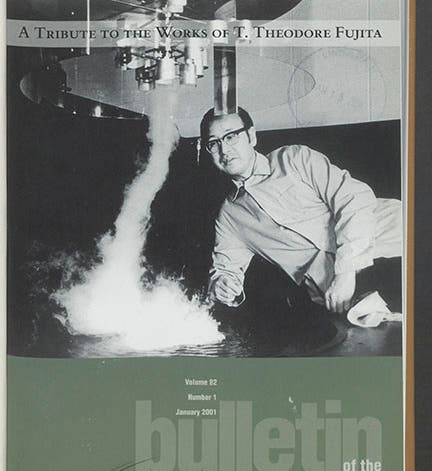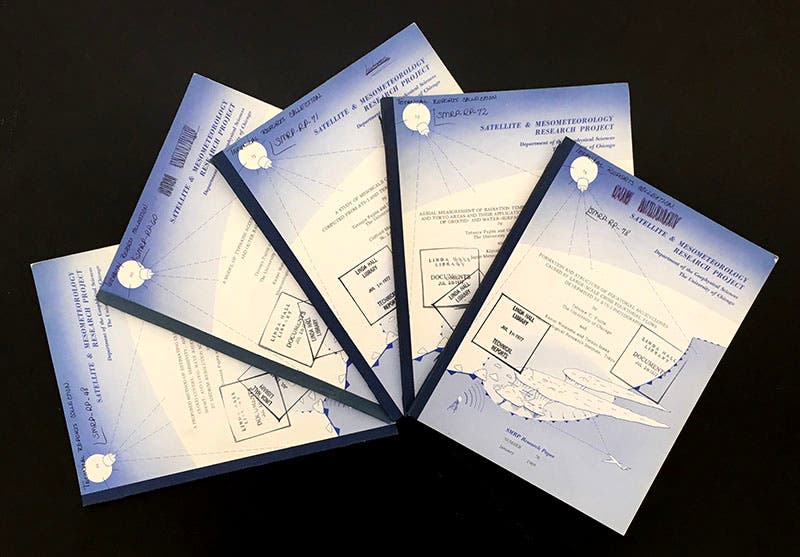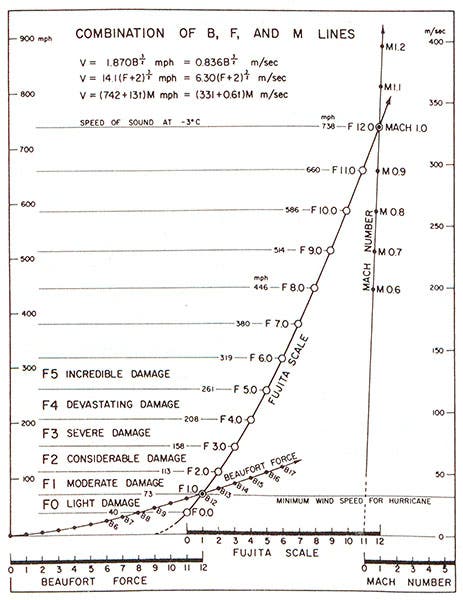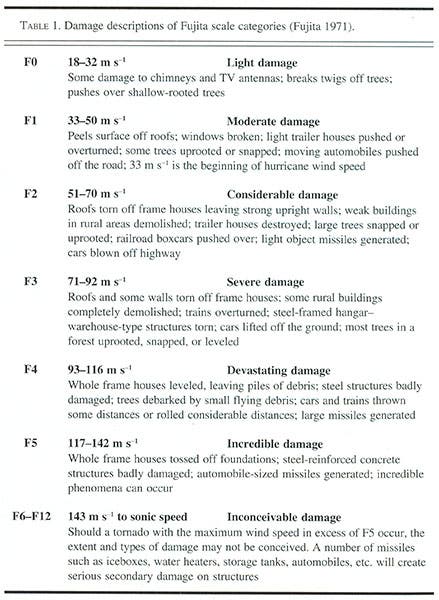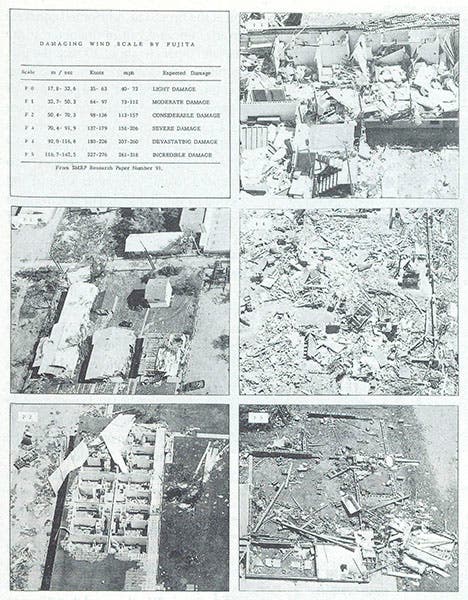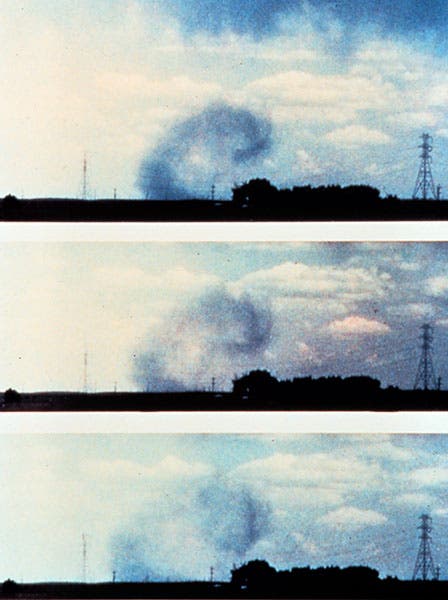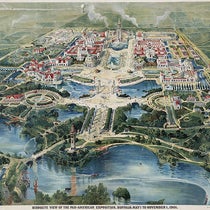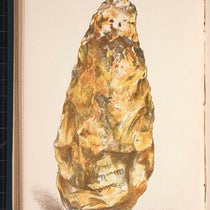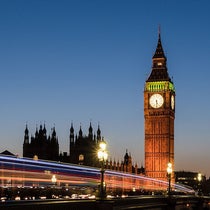Scientist of the Day - Tetsuya Fujita
Tetsuya Theodor Fujita, a Japanese/American meteorologist known to his colleagues as Ted, was born Oct. 23, 1920. Fujita was raised and educated in Japan; he came to the United States at age 33 to conduct weather research at the University of Chicago, focusing on mid-size weather phenomena, neither local nor global, which is known as mesometerorology. He is best known for devising the Fujita scale for tornados, which he proposed in 1971, where a tornado is assigned a rating of F0 through F5, a designation that can be determined either through wind speed or assessment of damage.
The Fujita scale was proposed in a Satellite and Mesometeorology Research Paper, no. 91 to be precise, in 1971. We have a run of this serial in the Library, which seems to have been something of a personal professional venue for Fujita, since every one of the issues fanned out in our second image has Fujita as principal or second author. However, we do not have issue 91, which is too bad. We have been looking for a copy for some time, but it is hard to know where to look.
In lieu of the original, we show you some images from a 2001 number of the Bulletin of the American Meteorological Society, which was issued in honor of Fujita after his death in 1998, and included a portrait of Fujita on the cover (first image). One article reproduces the original 1971 chart comparing the proposed tornado scale to the Beaufort wind scale and the Mach number scale (third image). It also reprints a table that describes each of the Fujita ratings from F0 to F5 (fourth image). Note the description of tornados greater than F5 (of which there have been none so far, thankfully).
The same article also reproduces 5 original photos from the 1971 paper of tornado damage from hurricanes with scale ratings of F0 through F5 (fifth image).
Fujita, a man for all seasons, made other important contributions to our understanding of severe weather. He was one of the first to use radar to study downdrafts, and to propose the existence of microbursts, extremely powerful downdrafts that can produce high-speed winds in limited areas. While microbusts are now an accepted part of our understanding of weather patterns, the idea was widely resisted for many years, since it was hard to believe such powerful winds could downdraft in localized areas for such a short period of time (mere minutes). We now know that microbursts have caused serious damage to buildings in dozens of incidents and have produced a number of fatal aircraft accidents. The term microburst was coined by Fujita. We see in our sixth image a remarkable series of three photographs capturing the outflow and curl from a microburst.
Most short biographies of Fujita (including, apparently, this one) cannot resist mentioning that in 1945, Fujita was living in Kokura, Japan. On Aug. 9, 1945, a B-29 bomber hovered over Kokura, its primary target, with a plutonium bomb called Fat Man in its bay. But the cloud and smoke cover over Kokura was so thick that after three flyovers, the bomber moved on to its secondary target and dropped its payload on Nagasaki. It is more than a little ironic that this future mesometeorologist was spared by the vagaries of a local weather pattern. It is not clear (to me) when the US government revealed that Kokura was the primary target that day – they certainly didn't admit it right away – but presumably it leaked out in Fujita's lifetime, which must have given him (and hundreds of thousands of Kokurans) a special feeling that I cannot even imagine. If it was a gift of a second life, he certainly used it well. Dr. William B. Ashworth, Jr., Consultant for the History of Science, Linda Hall Library and Associate Professor emeritus, Department of History, University of Missouri-Kansas City. Comments or corrections are welcome; please direct to ashworthw@umkc.edu.

